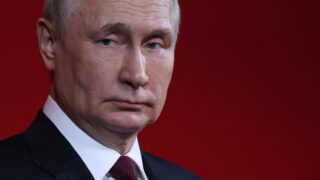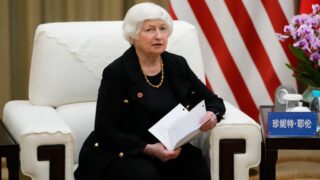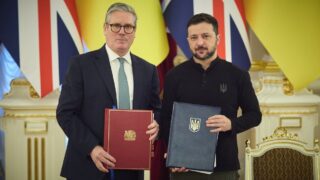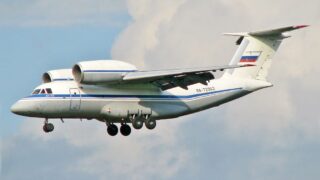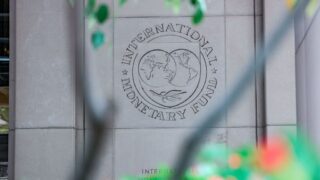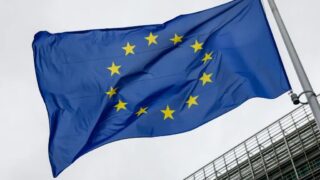
Ukraine triples military tax, but still faces $12 B defense gap in 2024
Ukraine just launched its biggest tax increase since the war began. After parliament passed the law in October and President Volodymyr Zelenskyy signed it on 28 November, the government is set to raise taxes across the board starting 1 December—from military taxes to business levies. The move has sparked fierce opposition from businesses that say they can’t handle higher costs during wartime.
The tax hike comes as Ukraine faces a massive funding problem. The military needs an extra UAH 500 billion ($12.1 billion) this year just to keep going. Each soldier costs UAH 1.2 million ($29,000) annually, and costs keep rising as more troops are needed. While foreign aid helps, it’s not enough – especially since few partners are willing to fund Ukraine’s weapons production directly. This means nearly all tax money goes to military needs, while hospitals, schools, and social programs rely completely on international support.
Euromaidan Press explains what exactly will change in Ukraine’s tax system, how much money the government hopes to raise, and why some experts think this plan could backfire.
What has changed
The major change is the increase of income tax. Several minor taxes were increased, too.
Key changes include:
- Military tax, introduced in 2014 at 1.5% when Russia began its war against Ukraine, will increase to 5% (with exemptions for military personnel). This tax is paid on all income, such as salaries, bank interest, dividends, profits, etc.
- Military tax will be extended to small entrepreneurs taxed using a simplified tax system (FOPs).
- A shift from quarterly to monthly reporting for income and profit taxes.
There are also several changes increasing sectoral taxes:
- A new 50% tax will be reimposed on bank profits.
- A 25% corporate tax will be imposed on financial companies.
- Gas stations will be imposed with fixed advance corporate tax payments based on the number of retail fuel locations and the presence of shops.
- Corporate tax tied to the euro will be introduced for currency exchange points. It will range from EUR 200 to EUR 700, depending on the settlement size (city, town, or village) where the exchange point is located.
- The tax for natural resource extraction will increase.
- The minimum tax for land will be raised to UAH 700 ($17) per hectare.
New taxes will raise billions, but a huge gap remains
According to Ukraine’s MP Yaroslav Zhelezniak, the law will generate UAH 8 billion ($190 million) by the end of 2024, rising to UAH 141 billion ($3.41 billion) in 2025 – representing a 7% increase in domestic revenue based on 2025 budget projections.
Yet these figures pale in comparison to the immediate military funding gap. Prime Minister Denys Shmyhal has revealed that the armed forces face a UAH 500 billion shortfall ($12.1 billion) this year alone, largely driven by mobilization costs.
“Each soldier costs the budget UAH 1.2 million,” Shmyhal explained. “As we recruit more personnel, we must increase the armed forces’ budget accordingly.”
The funding challenge is compounded by limited international support for domestic arms production. Except for some modest initiatives from Denmark, Western partners have not provided direct financial assistance for Ukraine’s defense industry. This forces Ukraine to channel almost all its tax revenues into military procurement and the salaries of its service members.
Meanwhile, essential civilian services – including healthcare, education, and social programs – must rely entirely on international aid and loans to cover their budget deficits. While the new tax package will help, it represents just 1.6% of Ukraine’s GDP, with the overall budget deficit projected to remain at 19% of GDP in 2025.
Nevertheless, government officials emphasize the strategic importance of this tax increase. It will provide dedicated funding for critical military needs that international partners have been reluctant to support, helping Ukraine maintain its defense capabilities.
The tax increase was IMF’s key demand
The tax increase, however, serves another purpose beyond just revenue generation. It was a key condition for the International Monetary Fund’s continued support through its four-year $15.6 billion arrangement to maintain Ukraine’s economic stability.
IMF Mission Chief Gavin Gray emphasized that this demonstration of fiscal responsibility could significantly influence Western partners’ willingness to maintain their support, given Ukraine’s substantial medium-term spending needs.
IMF representative Priscila Tofano further underscored this strategic importance during her 22 November visit to Kyiv. She presented a compelling economic argument for sustained international support.
“Financing the country now is worth it. Not only in terms of values, principles, or morality, but it may be cheaper for its allies. It is cheaper to finance Ukraine now and prevent it from losing the war than to cover the costs of additional defense or refugees if Ukraine loses the war,” Tofano said.
Tofano also highlighted Ukraine’s track record as a reliable borrower with a solid debt repayment plan, making current investment in the country’s stability a pragmatic choice for international partners.
Tax reform under fire
The new tax increase has faced significant pushback from Ukrainian businesses, with critics highlighting a fundamental flaw: it primarily affects law-abiding taxpayers while leaving the shadow economy untouched. This concern is far from trivial – the Institute for Socio-Economic Transformation estimates that Ukraine’s shadow economy deprives the budget of UAH 400 billion ($9.7 billion) in revenue, nearly matching the budget shortfall cited by PM Shmyhal.
Critics point to a lack of comprehensive reform alongside the tax increase. There’s been no strict budget sequestration to cut spending, no strategy to tackle the shadow economy, and no plan to reform the customs service, which continues to be a significant drain on Ukraine’s economy.
An alternative approach has gained support from both domestic experts and international advisors: increasing the Value Added Tax (VAT). IMF Deputy Mission Chief Trevor Lessard particularly advocates for this solution, arguing that VAT increases would generate immediate, broad-based revenue more effectively than income tax hikes. This recommendation stems from a deeper analysis of Ukraine’s tax system, which Lessard says suffers from fundamental inequities, including the widespread use of the simplified tax system to avoid higher salary taxes.
Besides the VAT increase, Lessard highlights the importance of improving tax fairness through various measures, including customs reforms and changes to the simplified tax system.
The IMF has also criticized Ukraine’s decision to extend the 50% bank profit tax for a second year. Lessard warns that this extension undermines the fundamental nature of windfall taxation and could harm policy credibility. Banks might adjust their profit strategies in anticipation of continued high taxes, potentially reducing future state revenue.
These concerns have found support within Ukraine’s financial leadership. National Bank Governor Andriy Pyshnyi and Deputy Governor Kateryna Rozhkova have raised alarms about the extended profit tax’s potential consequences, warning that it could push some banks, including two state-owned institutions, below regulatory capital requirements.
Ukraine’s 2025 budget: 95% of revenue goes to military
Ukraine’s 2025 budget reflects the stark reality of a nation at war, with defense spending dominating financial planning. The budget framework, presented by PM Shmyhal, projects total revenue of UAH 2.339 trillion ($56.6 billion) against expenditures of UAH 3.941 trillion ($95.4 billion). This leaves a substantial deficit of UAH 1.6 trillion ($39.7 billion), which Ukraine expects to cover through international assistance.
Defense and security claim the lion’s share of spending, with UAH 2.23 trillion ($54 billion) allocated for military needs. This includes a record-breaking UAH 739 billion ($17.9 billion) specifically for weapons procurement, alongside funding for army salaries and other defense requirements. The scale of military spending is striking: Ukraine plans to dedicate 95% of its domestic budget revenue – excluding international aid – to weapons and defense.
Civilian sectors face tighter constraints. Social protection programs will receive UAH 421 billion ($10.2 billion), marking a UAH 50 billion reduction from the previous year. Healthcare and education budgets are set at UAH 217 billion ($5.3 billion) and UAH 199 billion ($4.8 billion).
Despite these challenges, international partnerships offer promising opportunities for Ukraine’s defense capabilities. The success of Danish-funded initiatives demonstrates this potential – Ukrainian factories quickly ramped up production of Bohdana howitzers and drones within months of receiving funding.
Currently, Ukraine’s domestic budget cannot fully utilize its growing defense industry’s production capacity. However, the potential entry of Norway, Sweden, and other countries into similar funding arrangements could significantly boost Ukraine’s defense capabilities beyond what the national budget alone could support.
PM Shmyhal maintains optimism about financial stability in the coming year, citing strong coordination between government branches and reliable international support.
Related:




